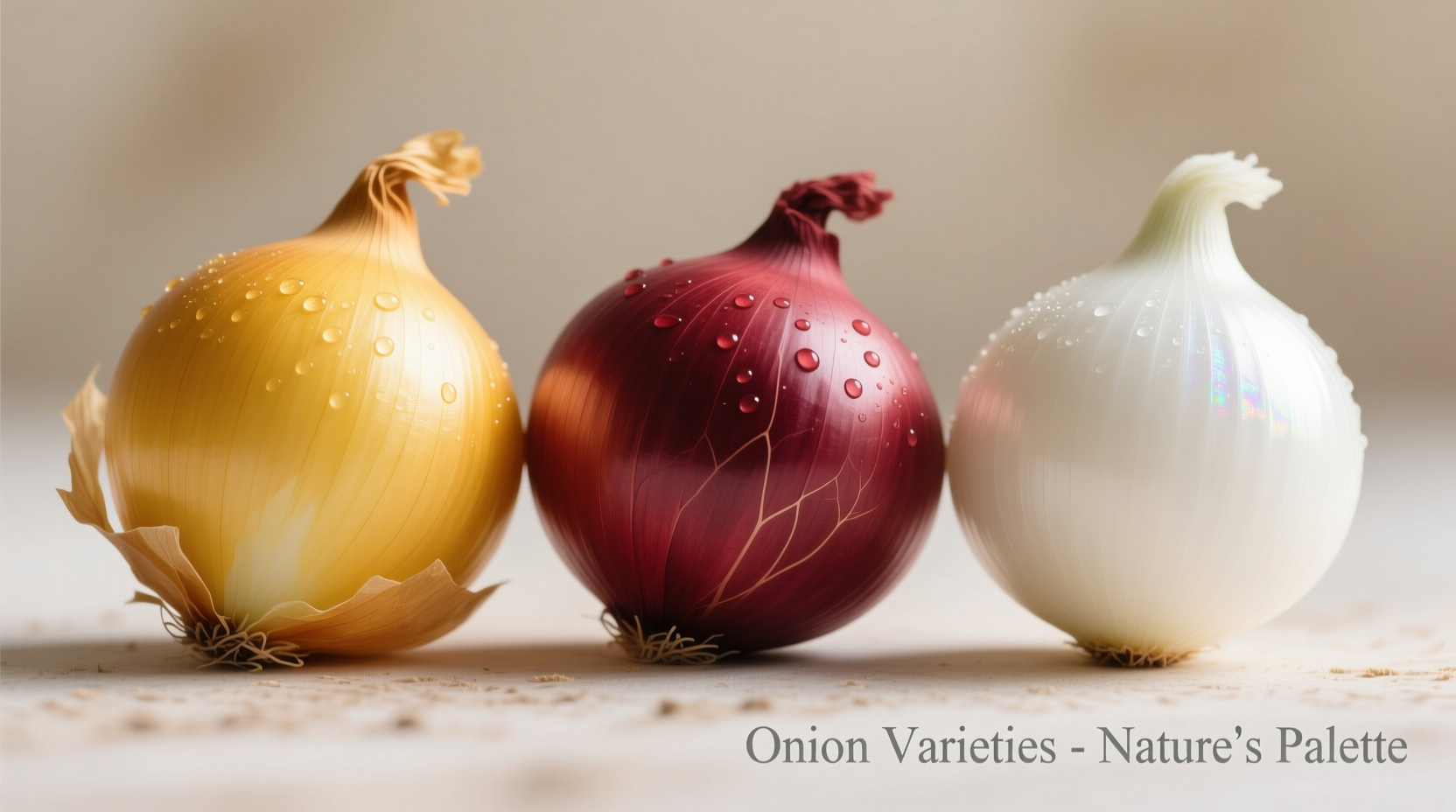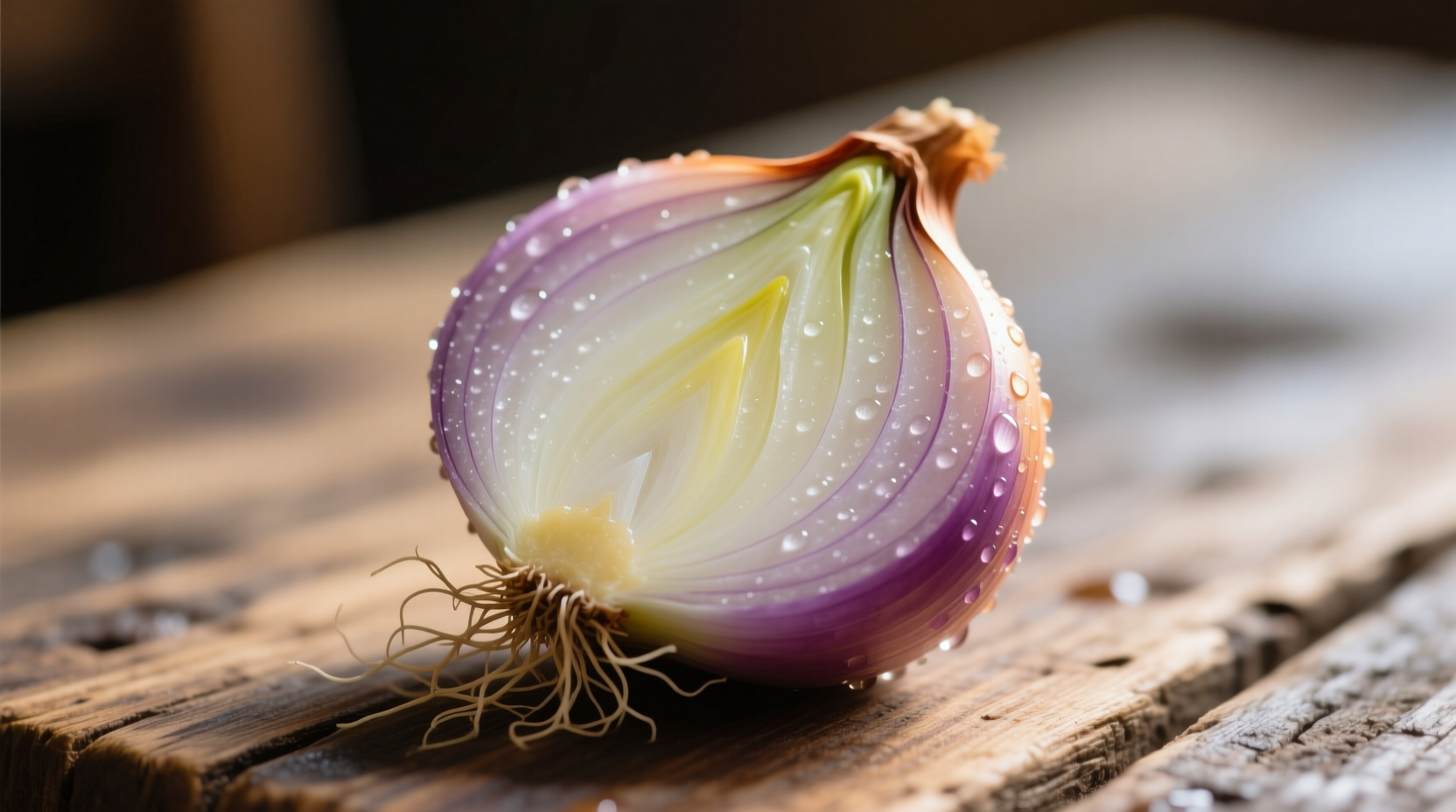Understanding onion varieties through visual identification helps home cooks and gardeners make better choices for recipes and cultivation. This comprehensive visual guide provides clear reference points for identifying different onion types, their optimal uses, and selection criteria.
Common Onion Varieties at a Glance
When searching for a pic of an onion, you'll encounter several primary varieties that differ in color, flavor profile, and culinary applications. Recognizing these visual differences ensures you select the right onion for your specific cooking needs.
| Variety | Appearance | Flavor Profile | Best Culinary Uses | Storage Duration |
|---|---|---|---|---|
| Yellow Onions | Brownish-gold skin, white to pale yellow flesh | Strong, pungent when raw; sweetens when cooked | Sautéing, caramelizing, soups, stews | 2-3 months |
| Red Onions | Purple-red skin, deep magenta flesh | Sharp, slightly sweet | Salads, sandwiches, pickling, grilling | 3-4 weeks |
| White Onions | Pale gold skin, crisp white flesh | Sharp, clean flavor | Mexican cuisine, salsas, fresh applications | 1-2 months |
| Sweet Onions | Light yellow skin, high water content | Mild, sweet (lower sulfur compounds) | Raw applications, grilling, onion rings | 2-3 weeks |
Understanding Onion Anatomy Through Visual Identification
When examining a detailed pic of an onion, notice these key anatomical features that affect both appearance and culinary properties:
- Outer skin: Papery layers that protect the bulb; color varies by variety
- Neck: The narrow top portion where leaves emerge
- Basal plate: The flat bottom where roots grow
- Fleshy scales: The edible concentric layers containing flavor compounds
- Central core: The undeveloped bud in the center
Professional food photographers like those at the USDA Agricultural Research Service document these features to help consumers identify quality onions. The visual characteristics directly correlate with flavor intensity and storage potential.

Historical Timeline of Onion Cultivation
Onions have been cultivated for over 5,000 years, with visual documentation evolving alongside agricultural practices:
- 2500 BCE: Earliest known onion cultivation in ancient Egypt, depicted in tomb paintings
- 1st Century CE: Roman agricultural writer Columella documented different onion varieties
- 16th Century: European botanical illustrations began distinguishing between onion types
- 1800s: USDA begins systematic documentation of onion varieties in the United States
- 1940s: Development of sweet onion varieties like Vidalia through selective breeding
- Present: Digital photography enables precise visual identification of onion characteristics
This historical context helps explain why certain varieties dominate specific culinary traditions. The visual documentation of onions has progressed from ancient drawings to today's high-resolution photography, making identification more accessible than ever.
Practical Selection Guide: Choosing Onions by Appearance
When selecting onions based on visual inspection, follow these practical guidelines that professional chefs use:
Quality Indicators to Look For
- Firm, dry outer skin without soft spots or blemishes
- Crunchy sound when gently squeezed (indicates freshness)
- Minimal neck diameter (thinner necks indicate better storage potential)
- No visible sprouting from the center
- Heavy weight relative to size (indicates high water content)
Common Visual Mistakes to Avoid
- Mistaking sweet onions for standard yellow varieties (sweet onions have higher water content)
- Confusing red onions with purple shallots (shallots have elongated shape)
- Overlooking early sprouting signs that affect flavor
- Not checking for mold between layers through translucent skin
The National Onion Association confirms that visual inspection remains the most reliable method for consumers to assess onion quality before purchase. Their research shows that proper visual selection can extend usable life by up to 30%.
Storage Techniques for Maximum Freshness
Proper storage preserves both the appearance and quality of onions. Follow these evidence-based methods:
- Store in cool, dark, well-ventilated space (ideal temperature: 45-55°F/7-13°C)
- Never refrigerate whole dry onions (causes moisture retention and spoilage)
- Keep away from potatoes (they emit gases that accelerate sprouting)
- Use mesh bags or baskets instead of plastic for better air circulation
- Check stored onions weekly and remove any showing signs of spoilage
According to research from Cornell University's Food Science Department, onions stored under optimal conditions maintain their visual integrity and flavor compounds significantly longer than those stored improperly. Their studies show that humidity levels above 70% accelerate spoilage by 40% compared to ideal 60-70% humidity ranges.
Culinary Applications by Onion Variety
Understanding which onion variety to use transforms cooking results. Professional chefs match visual characteristics to culinary applications:
- Yellow onions: Best for cooking applications where flavor development is key. Their high sulfur content creates rich caramelization.
- Red onions: Ideal for raw applications where visual appeal matters. Retain color best when quick-pickled.
- White onions: Preferred in Mexican cuisine for their clean flavor that doesn't discolor salsas.
- Sweet onions: Perfect for raw applications due to lower pyruvic acid content (measured at 2.5-3.0 µmol/g vs. 5.5-6.5 in yellow onions).
The American Chemical Society has documented how different onion varieties release varying amounts of syn-propanethial-S-oxide (the compound that makes you cry) when cut. Yellow onions produce the most, while sweet varieties produce significantly less, making them preferable for raw preparations.
Specialty Onion Varieties Worth Knowing
Beyond the standard grocery store options, several specialty varieties offer unique visual and flavor characteristics:
- Shallots: Elongated shape, coppery skin, delicate flavor ideal for vinaigrettes
- Green onions/Scallions: Immature onions with white base and green stalks
- Leeks: Larger, milder cousin with layered white and light green sections
- Pearl onions: Small, round varieties perfect for pickling and roasting
- Vidalia onions: Certified sweet variety grown in specific Georgia regions
When searching for a high quality pic of an onion showing specialty varieties, look for images that clearly display the distinctive shape, color, and size differences that set these varieties apart from standard options.
Frequently Asked Questions
Why do onions make you cry when cut?
Onions release syn-propanethial-S-oxide when cut, a volatile compound that reacts with moisture in your eyes to form mild sulfuric acid. This irritates the eyes, triggering tear production. Chilling onions before cutting reduces this effect by slowing enzyme activity.
How can you tell if an onion has gone bad?
Signs of spoilage include soft or mushy spots, dark patches, visible mold, a slimy texture, or an off smell. Sprouting doesn't necessarily mean spoilage but indicates the onion is losing moisture and flavor. Discard onions with significant soft spots or mold.
What's the difference between sweet onions and regular onions?
Sweet onions have lower sulfur compounds and higher water content (typically 8-10% more) than yellow onions. This creates a milder flavor profile with less pungency. Sweet onions like Vidalia are seasonal (spring/summer), while yellow onions are available year-round and store longer.
Can you substitute one onion variety for another in recipes?
Yes, but with flavor considerations. Yellow onions work as a base substitute in most cooked dishes. For raw applications, red onions can replace white onions but will add color. Sweet onions make poor substitutes in dishes requiring strong onion flavor. When substituting, adjust quantities based on the variety's pungency level.











 浙公网安备
33010002000092号
浙公网安备
33010002000092号 浙B2-20120091-4
浙B2-20120091-4